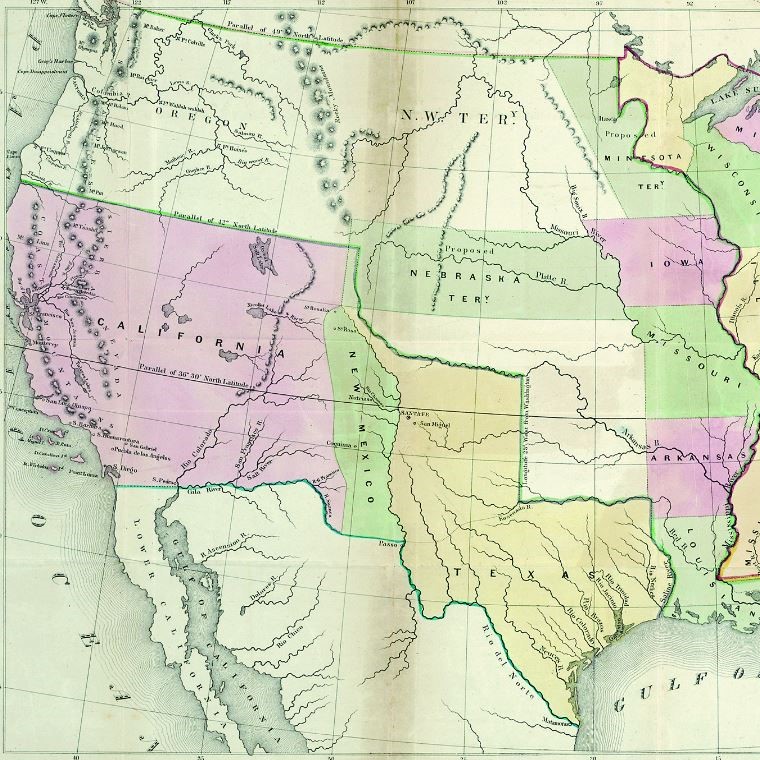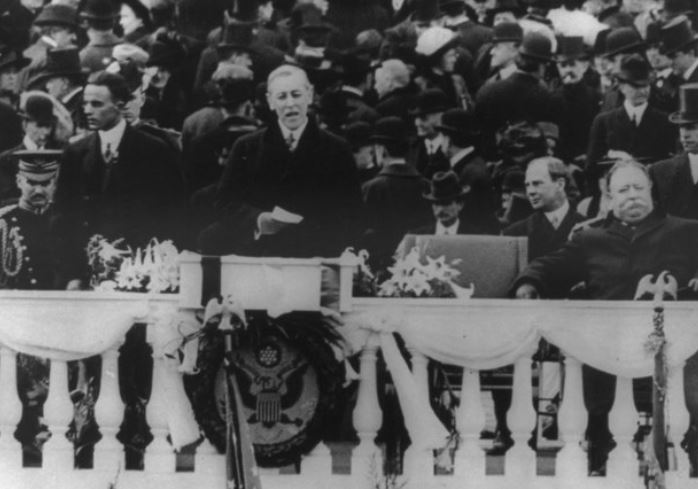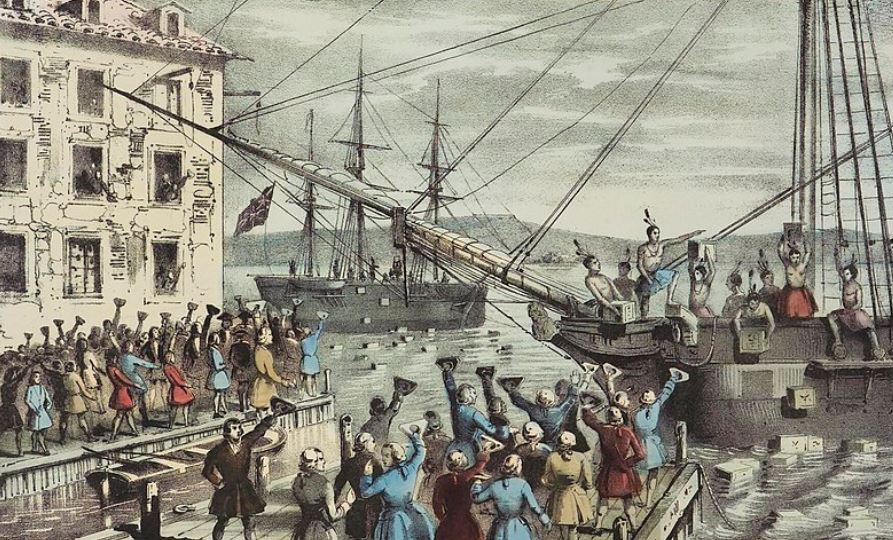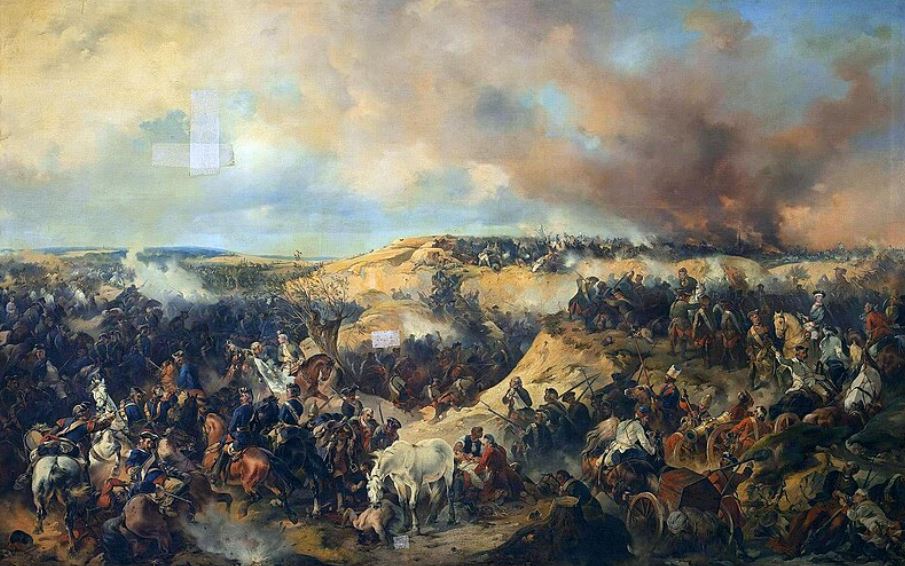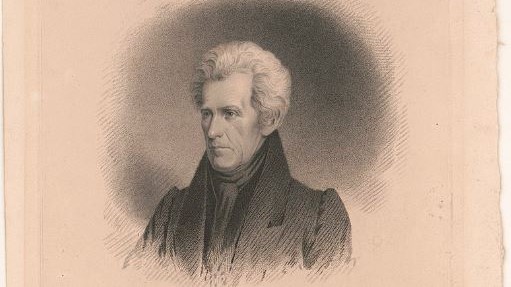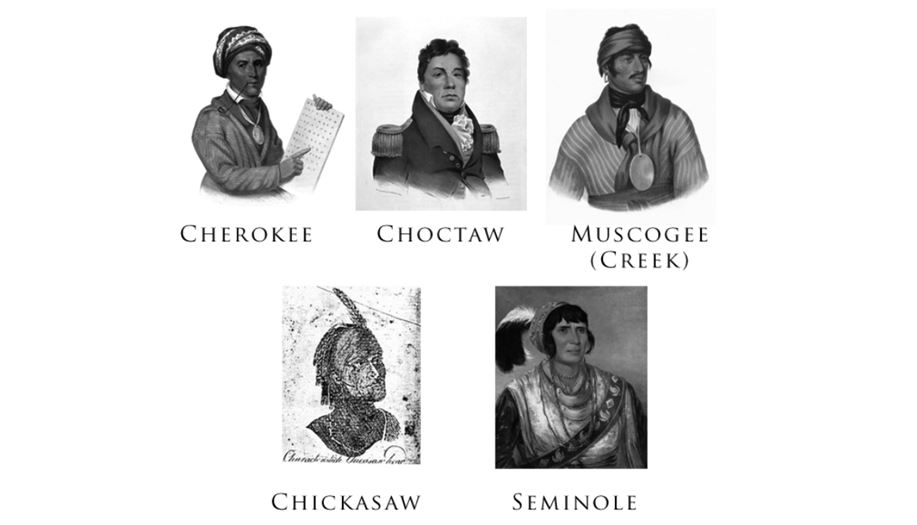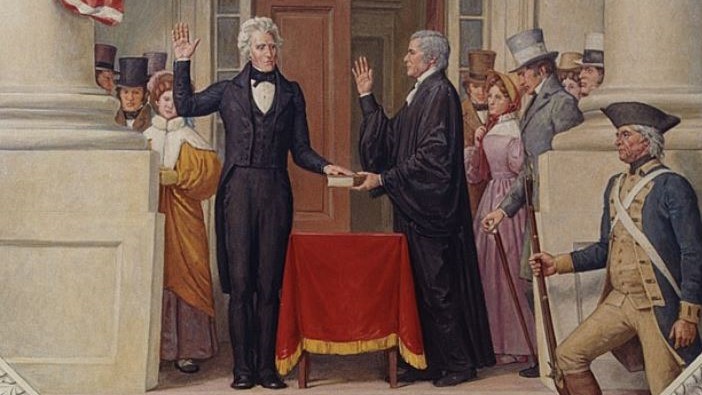Mexico and the United States have shared a complex and intertwined history that extends far beyond their modern-day borders. A surprising fact often goes unnoticed – several present-day US states were once part of Mexico.
This fascinating revelation traces back to the mid-19th century, when Mexico ceded vast territories to the United States. From the sun-drenched beaches of California to the vast deserts of Arizona, these states still bear the mark of their Mexican heritage.
Read on to discover the how these formerly Mexican lands became part of the United States.
1. The Mexican-American War (1846-1848)
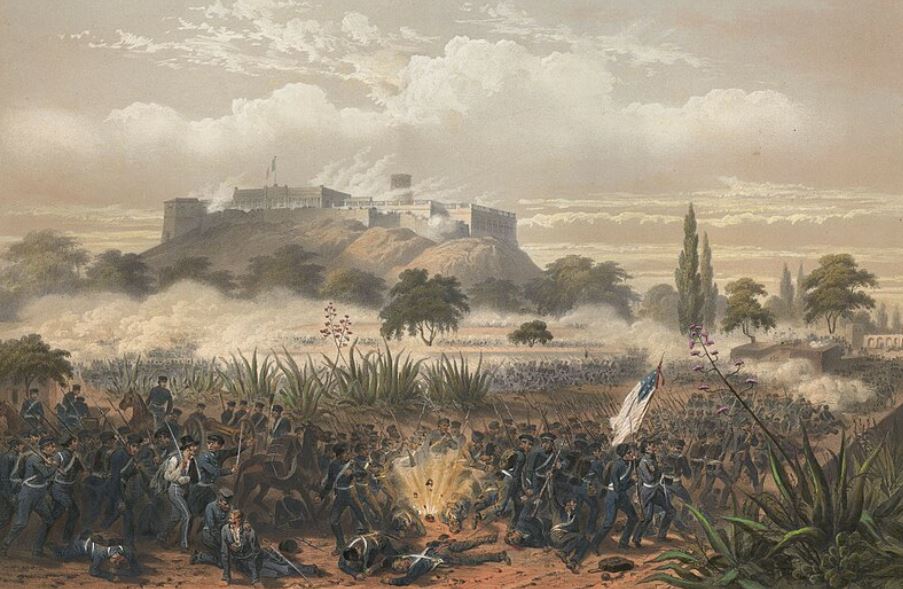
The Mexican-American War, which erupted in 1846, was a key conflict that would forever reshape the boundaries of the two neighboring nations.
The causes of this war were rooted in longstanding border disputes and the question of Texas’ independence.
After gaining independence from Spain in 1821, Mexico sought to solidify its control over the vast territories that stretched from present-day Texas to California.
However, tensions with the United States mounted as American settlers began to pour into the region, driven by the lure of fertile land and the promise of new opportunities.
Texas and the Spark of War
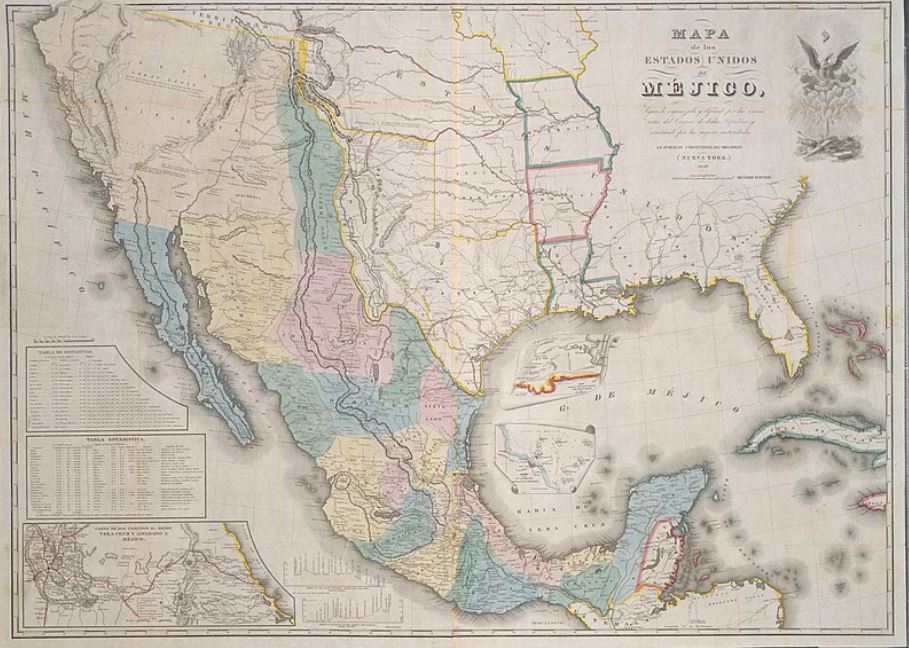
The flashpoint for the war came when Texas, which had been part of Mexico, declared its independence in 1836.
While Mexico refused to recognize this secession, the United States eventually annexed Texas in 1845, further fueling the already volatile situation.
Disagreements over the border between Texas and Mexico, particularly the ownership of the territory between the Nueces River and the Rio Grande, escalated into armed skirmishes.
In April 1846, these clashes culminated in the Mexican forces attacking an American patrol, providing the pretext for the United States to declare war on Mexico.
A Bitter Conflict
The Mexican-American War proved to be a bitter and costly conflict, with both sides suffering significant casualties. The United States, bolstered by its superior military resources and a larger population, ultimately gained the upper hand, scoring decisive victories at key battles such as Buena Vista and Veracruz.
Despite valiant efforts by Mexican forces, the war’s outcome seemed inevitable as American troops, led by generals like Zachary Taylor and Winfield Scott, advanced deep into Mexican territory, eventually capturing Mexico City in September 1847.
Faced with mounting losses and the occupation of its capital, Mexico had no choice but to negotiate a peace settlement. The resulting Treaty of Guadalupe Hidalgo, signed in 1848, brought an end to the two-year war and marked a significant territorial shift in North America.
2. The Treaty of Guadalupe Hidalgo: Reshaping the Map of North America
The Treaty of Guadalupe Hidalgo, signed on February 2, 1848, was a pivotal moment in the history of North America. This landmark agreement brought an end to the bloody Mexican-American War and marked a significant territorial shift between the two nations, forever altering the map of the region.
The Terms of the Treaty of Guadalupe Hidalgo
The terms of the Treaty of Guadalupe Hidalgo were far-reaching and had profound implications for both Mexico and the United States. The key components of the treaty were as follows:
Territorial Cessions
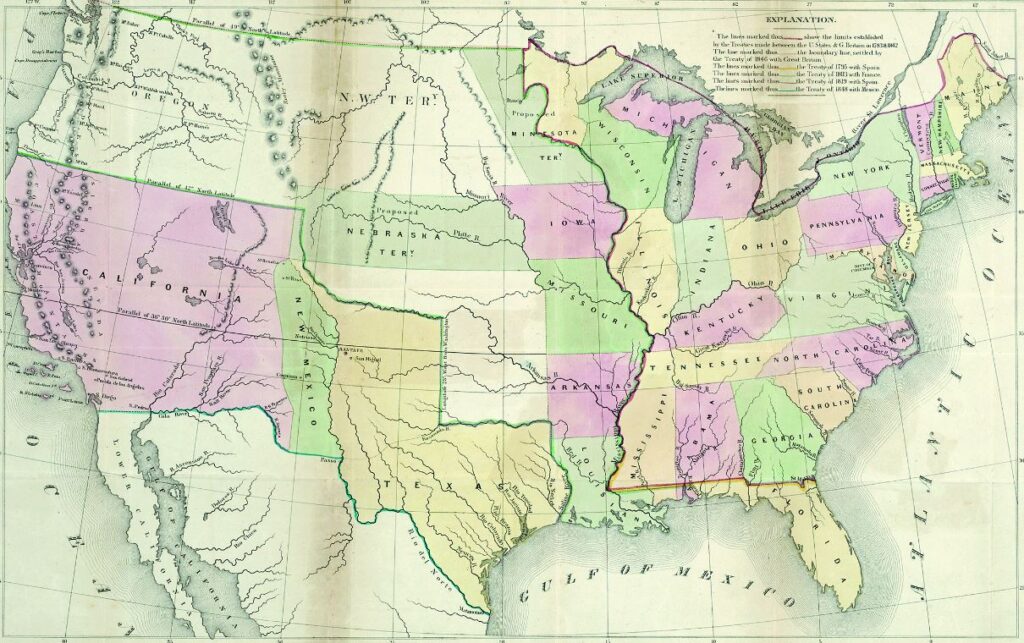
Perhaps the most consequential aspect of the treaty was the vast territory that Mexico ceded to the United States. Under the agreement, Mexico relinquished its claims to the following areas:
- California
- Nevada
- Utah
- Most of Arizona
- The western half of New Mexico
- Parts of Colorado, Oklahoma, Kansas, and Wyoming
This massive land transfer, which accounted for nearly half of Mexico’s territory at the time, paved the way for the United States’ westward expansion and the eventual creation of several new states.
Boundary Establishment
The treaty also established a new international boundary between the two countries. The agreed-upon boundary ran along the Rio Grande, from its mouth to the southern border of New Mexico, then westward to the Pacific Ocean. This effectively defined the modern-day borders between the United States and Mexico.
Financial Compensation
In exchange for the ceded territories, the United States agreed to pay Mexico $15 million, a significant sum at the time.
This financial compensation was intended to help mitigate the economic losses suffered by Mexico as a result of the war and the territorial concessions.
The Impact on Territory
The territorial gains secured by the United States through the Treaty of Guadalupe Hidalgo were immense, and their impact on the country’s geographic landscape cannot be overstated.
The acquired lands encompassed an area of approximately 525,000 square miles, nearly doubling the size of the United States.
The newly acquired territories opened up vast expanses of land for American settlement and development.
The California Gold Rush, which began just a year after the treaty was signed, fueled a massive influx of settlers to the region, accelerating the westward expansion and shaping the future of the American West.
The acquisition of these territories also had significant economic implications for the United States. The lands contained valuable natural resources, including gold, silver, and copper deposits, as well as fertile agricultural regions suitable for farming and ranching.
In the United States, the territorial gains paved the way for the country’s emergence as a continental power and fueled its ambitious pursuit of Manifest Destiny – the belief that the nation was destined to expand across the entire North American continent.
For Mexico, the loss of such a vast territory was a bitter pill to swallow, and the aftermath of the war and treaty negotiations left deep scars that took years to heal.
3. The Gadsden Purchase (1853)
Just five years after the Treaty of Guadalupe Hidalgo, the United States once again expanded its territorial footprint through the acquisition of land from Mexico. The Gadsden Purchase, finalized in 1853, was a strategic move that would have far-reaching implications for the nation’s ambitions.
Facilitating a Transcontinental Railroad
The primary motivation behind the Gadsden Purchase was the desire to secure a suitable route for a transcontinental railroad line, connecting the eastern and western portions of the United States.
The territories acquired from Mexico in the Treaty of Guadalupe Hidalgo left a crucial gap in the desired railroad route, as the rugged terrain of the Gila River valley in southern Arizona and New Mexico proved to be a formidable obstacle.
To overcome this challenge, the United States entered into negotiations with Mexico to purchase additional land in the region. The resulting Gadsden Purchase, named after the American diplomat James Gadsden who facilitated the deal, allowed the United States to acquire a strategic swath of land in southern Arizona and southwestern New Mexico.
The Territorial Acquisition
Under the terms of the Gadsden Purchase, the United States paid Mexico $10 million in exchange for approximately 29,670 square miles of territory.
This land acquisition effectively completed the territorial footprint that would eventually become the contiguous 48 states.
The acquired territory included the Mesilla Valley in southern New Mexico, providing a crucial gateway for the envisioned transcontinental railroad.
Additionally, the purchase solidified American control over the region, ensuring a direct route to the Pacific coast and facilitating the nation’s westward expansion.
Controversy and Implications
While the Gadsden Purchase achieved its primary objective of securing a viable railroad route, it was not without controversy.
Critics in the United States questioned the necessity of acquiring additional land from Mexico, citing concerns over the cost and the potential for further conflict.
However, proponents of the purchase saw it as a strategic move that would not only facilitate transportation and trade but also strengthen the United States’ position in the region. They argued that the acquisition would provide a buffer against potential foreign intervention and solidify American control over the vital southwestern territories.
The Gadsden Purchase also had significant implications for the indigenous communities living in the acquired territories.
As American settlers and railroad construction crews poured into the region, the lives and lands of these communities were inevitably disrupted, leading to further tensions and conflicts.
The acquired territory facilitated the construction of the transcontinental railroad, a monumental feat that connected the nation from coast to coast and facilitated the rapid growth and settlement of the western regions.
Today, the legacy of the Gadsden Purchase can be seen in the vibrant communities and diverse landscapes that make up the southwestern United States.
4. Impact of the Land Acquisitions
The United States’ acquisition of California, Nevada, Utah, Arizona, New Mexico, and portions of several other states from Mexico in the mid-19th century was a key event in the nation’s history.
The territorial gains resulting from the Mexican-American War and the Gadsden Purchase were immense, increasing the land area of the United States by nearly one-third. This vast expansion allowed for the continued westward migration and settlement of the American frontier, fueling the nation’s growth and development.
The absorption of formerly Mexican territories brought an influx of Hispanic culture, language, and traditions, enriching American society.
Additionally, the acquired lands contained valuable natural resources and fertile agricultural regions, contributing to the economic prosperity of the expanding nation.
Further Reading
If you enjoyed this article, you may be interested to read more about the American History, or perhaps read about the Mexican-American War.

